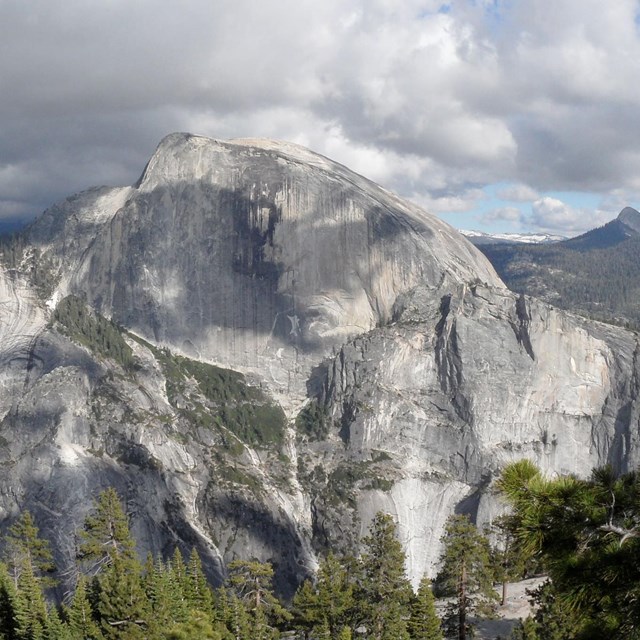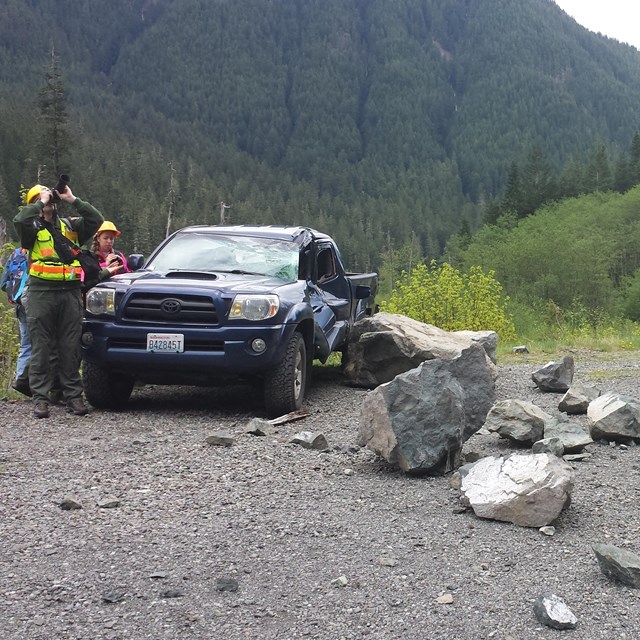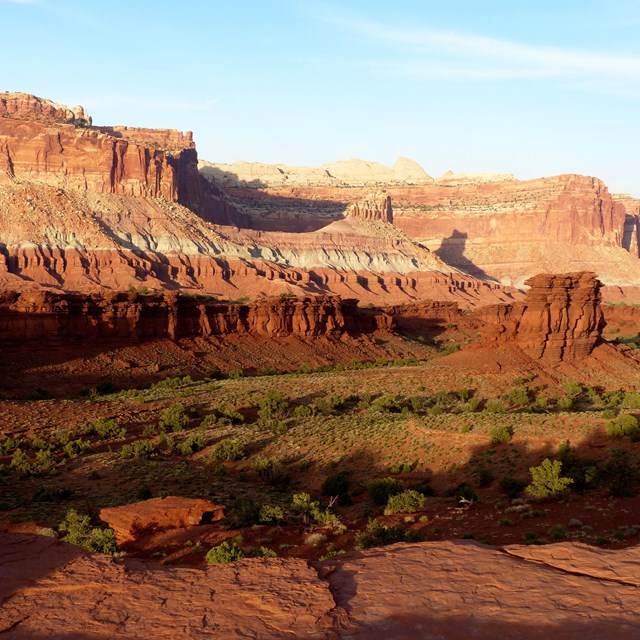Last updated: April 29, 2025
Article
Studying the Fate of Arches
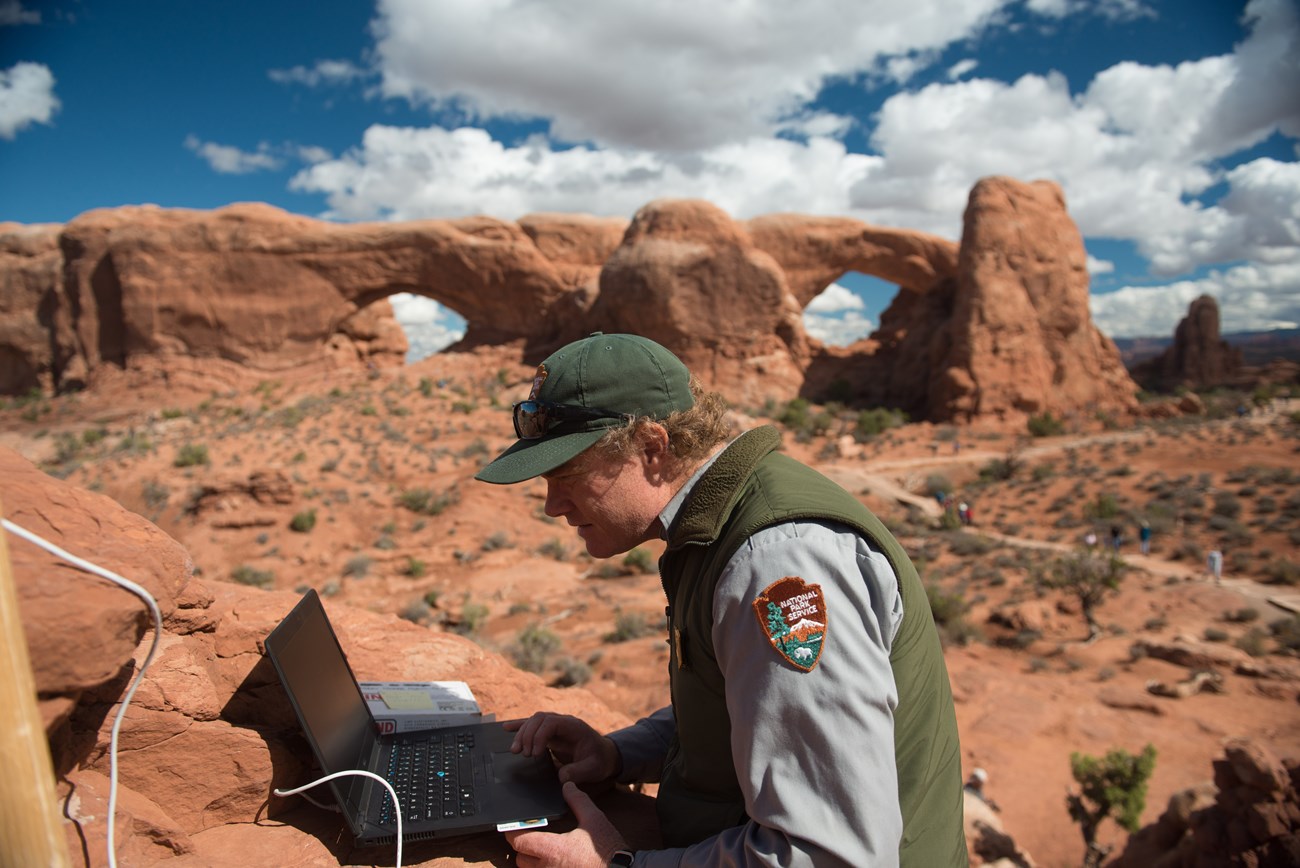
NPS/Chris Wonderly
The dynamic landscape of Arches National Park is like a storybook, telling the tales of change throughout this unique place. The forces of erosion, water, gravity, and time have brought the stories of the arches to life, and it is important to be aware of what these powerful forces can bring. In 1991, a piece of Landscape Arch tumbled to the ground, leaving visitors humbled as witnesses to the power of time. The collapse of Wall Arch in 2008 left only a pile of sandstone as evidence of the once-towering arch. Each event, no matter how significant, marks another compelling page in the storybook of Arches. The creation and destruction of the arches of Arches National Park create a miraculous story that spans well beyond a human timescale, but we can still be a part of the story as research helps us understand it.
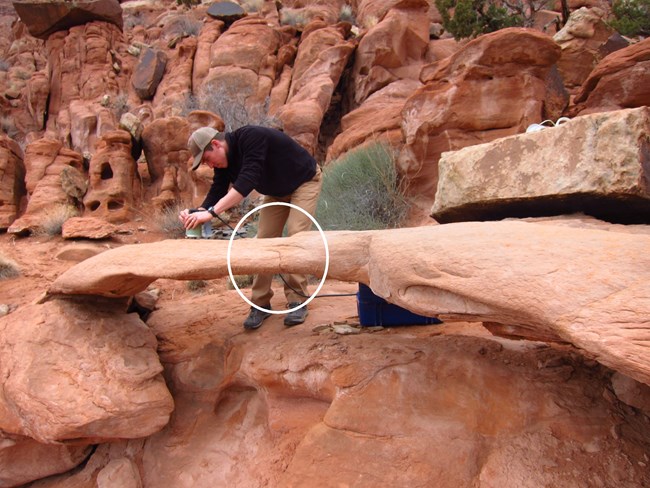
Courtesy Paul Geimer
Research projects in the park can help us piece together the story of Arches, and predict what it might be like in the future. Researchers across the United States are monitoring arches, both inside and outside the park. Dr. Jeff Moore, a professor and researcher at the University of Utah, and his team began monitoring arches in Arches National Park in 2013, and they currently study seven sites in the park. They also monitored Rainbow Arch until it collapsed earlier this year; a rare occurrence that can help us predict fates of similar arches. Moore and his team monitor 18 other arches across the region, including three sites in Canyonlands National Park and Owachomo Bridge in Natural Bridges National Monument. Dr. Moore’s research uses resonance readings to record vibrations in the rock, seeing how the rock responds. Certain frequencies can reveal the weakness in an arch’s structure. Using resonance readings, we can learn how fragile each arch is, and what that might mean for the future of the arch.
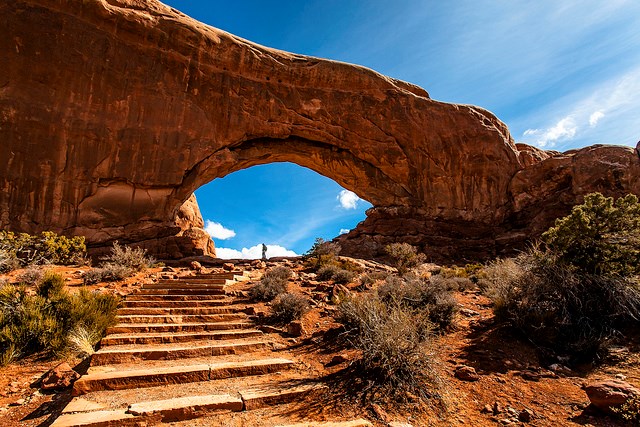
NPS/Jacob Frank
Beyond research interests, park staff and scientists monitor arches to assess the safety of visitors. Over 1.5 million people visit the park every year, and it is important to keep everyone safe as the arches face the harsh tests of time. Park staff are particularly concerned about the crack in North Window as an indicator of change and potential danger. The arch is made from two separate fins, creating a crack that runs across the length of the arch. Several boulders are wedged between the fins, suspended above the ground where thousands of visitors stand daily. The width of the crack varies in response to environmental changes, so a crackmeter was installed on top of the arch in November 2015 to record any fluctuations, which could indicate the increased risk of rockfall.
In almost three years, the crackmeter has found cyclical patterns in the crack’s activity as temperature and seasons change. “There are two significant things we found,” Dr. Moore summarizes. “To the best of our current analysis, there is no opening trend...However, the annual opening and closing is larger than we’d thought it would be. This crack is really dynamic.” The data shows that the crack expands and contracts over 2 centimeters annually, yet it stays within the same range of movement from year to year. Even over the course of one day, the crack moves more than half a millimeter on average. The crackmeter records data every 30 minutes, and any indication of abnormal expansion would lead the closure of the Windows area in order to protect visitors from rockfall. Someday the crack will expand beyond its normal range, bringing North Window's story to an end. Until then, this project keeps visitors safe while documenting the fascinating story of North Window.
Every story of the park’s 2,000 arches will end at some point. However, new arches are forming at a similar pace, which will continue the story of Arches National Park. The park is constantly changing as the tests of time write each arch’s story, from beginning to end. As you look at each arch, think of the timescale of its story compared to your own. What tests of time mark your greatest chapters of change? What will be left as a testimony to your story?
Tags
- arches national park
- canyonlands national park
- natural bridges national monument
- geologic monitoring
- geology
- erosion
- scientific research
- natural arch
- arches
- rock formation
- research
- science
- change
- arch formation
- rocks
- scientific
- climate
- geologic feature
- geologic formations
- geologic resources
- geologic history
- geologic resources inventory
- geology science and learning
- geological monitoring
- geologic forces
- geoheritage
- geoscientists in parks
- geoscientists-in-the-parks
- rockfall
- natural bridge
- geohazards

